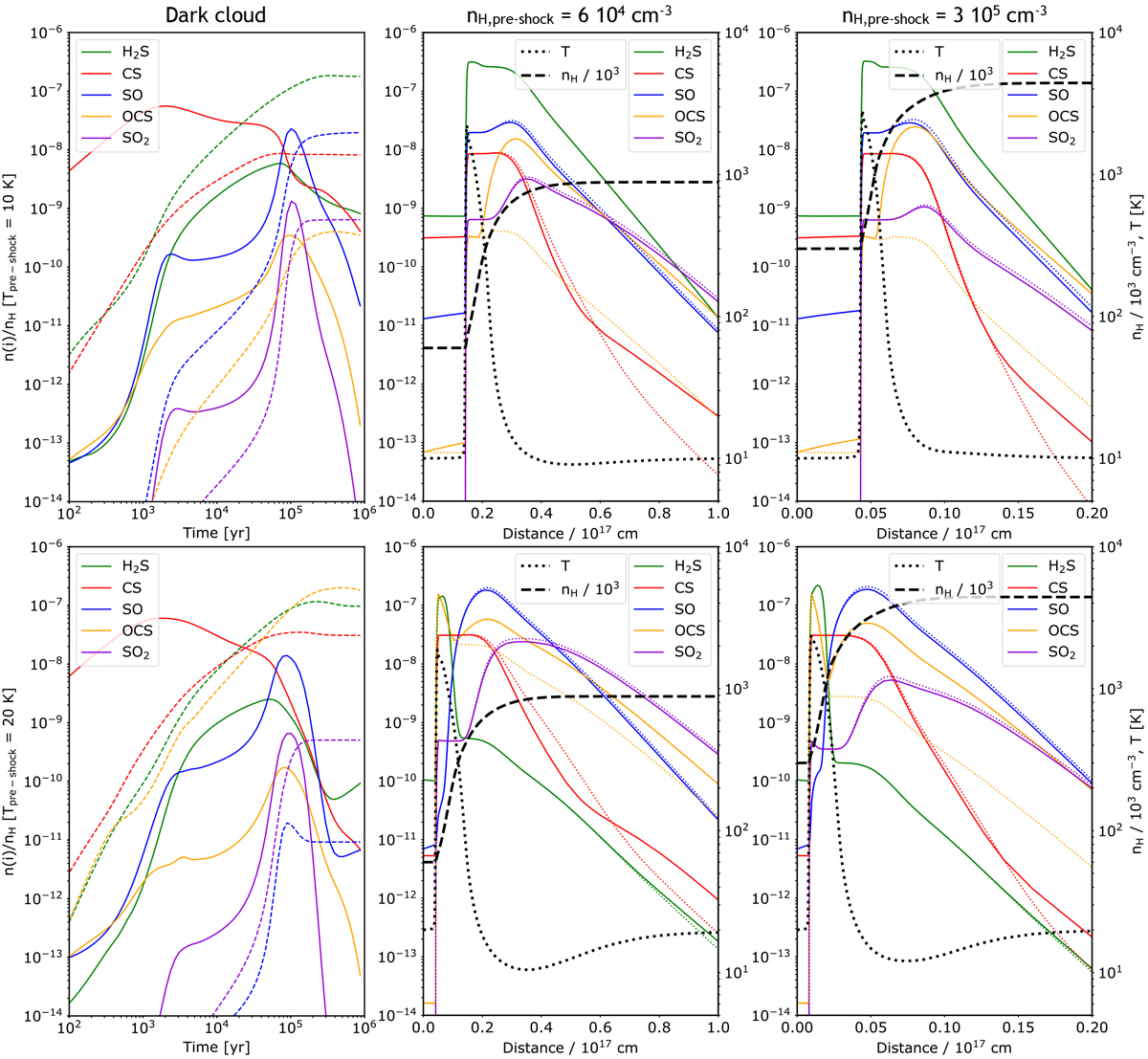Fig. 10

Left panels: absolute abundances of selected sulfuretted species as a function of time predicted by the GRAINOBLE astrochemical model in the gas phase (solid curves) and in interstellar ices (dashed curves) at 10 K (top) and 20 K (bottom) and for nH = 2× 104 cm−3, ζ = 10−17 s−1, and AV = 20 mag. Middle and right panels: gaseous absolute abundances of selected sulfuretted species (coloured curves) and physical conditions (black curves) profiles in 1D C-type shocks predicted by the Paris-Durham shock code for a pre-shock density of 6 × 104 cm−3 (centre panels) and 3 × 105 cm−3 (right panels). Solid and dashed coloured curves show the abundances with and without the OCS formation/destruction reactions introduced by Loison et al. (2012), respectively (see text for more details). For the shocks considered here, the entire icy material formed in dark clouds is sputtered in the shock front, final ice abundances in the left panels are therefore similar to the gas phase obtained at the shock front in the middle and right panels, with the exception of H2 S that is efficiently formed through hot gas phase chemistry.
Current usage metrics show cumulative count of Article Views (full-text article views including HTML views, PDF and ePub downloads, according to the available data) and Abstracts Views on Vision4Press platform.
Data correspond to usage on the plateform after 2015. The current usage metrics is available 48-96 hours after online publication and is updated daily on week days.
Initial download of the metrics may take a while.


